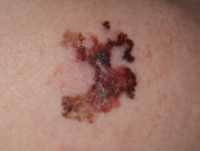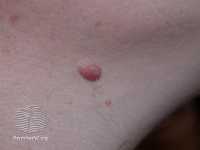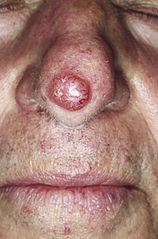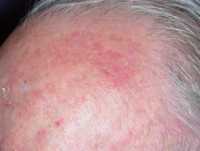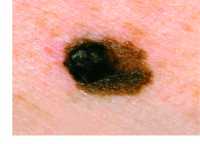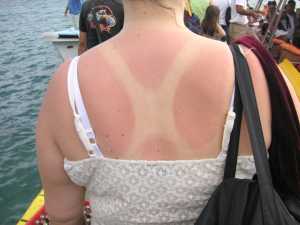Once Daily Five-Day Course of Novel Topical Agent Clears Actinic Keratoses
Melanoma: Gene Profile Test Can Help Pathologists Identify Difficult-To-Diagnose Lesions
Multiple Cutaneous Squamous Cell Carcinomas are a Growing Health Care Burden
Pediatric Nonmelanoma Skin Cancers Without Known Risk Factors
Melanoma: Florescent Biomarkers Detectable in Urine
Skin Cancer Recognition Enhanced By Human-Computer Collaboration
Melanoma: Bioresorbable Skin Patch Developed to Deliver Prolonged Local Chemotherapy
AI Improved Diagnosis of Skin Disorders, especially Distinguishing Benign from Malignant Tumors
Which States Have Most Ultraviolet-Related Melanomas?
Don’t Rely on Smartphone Apps To Diagnose Skin Cancer
Skin Cancer Risk Increased in Gay and Bisexual Men
Bariatric Surgery Linked to Reduced Melanoma Risk
Australia’s SunSmart Program Program Linked to Decrease in Melanomas
Smart Phone App Uses Machine Learning To Triage Skin Cancers
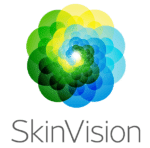 MedicalResearch.com Interview with:
Andreea Udrea, PhD
Associate Professor
University Politehnica of Bucharest
MedicalResearch.com: What is the background for this study?
The skin cancer incidence rate is increasing worldwide. Early diagnosis and prevention can reduce
morbidity and are also linked to decreased healthcare costs. During the last years, efforts have been
made in developing smartphone applications for skin lesion risk assessment to be used by laypersons.
In parallel, as machine learning (ML) is on the rise, and medical image databases are increasing in size, a
series of algorithms have been developed and compared in clinical studies to dermatologists for skin
cancer diagnosis. The accuracy of the algorithms and experts were comparable.
One drawback of these clinical studies is that they use images acquired by professionals in standardized
conditions. So, there is little knowledge of what the accuracy will be when including an ML algorithm in
an app and testing it in a non-clinical setup where the image quality may be lower, and the variability in
image taking scenarios is higher as images are acquired by non-professionals using the smartphone
camera. This study is one of the first that evaluates the accuracy of an app (SkinVision) when being used
for risk assessment of skin lesions in the general population.
(more…)
MedicalResearch.com Interview with:
Andreea Udrea, PhD
Associate Professor
University Politehnica of Bucharest
MedicalResearch.com: What is the background for this study?
The skin cancer incidence rate is increasing worldwide. Early diagnosis and prevention can reduce
morbidity and are also linked to decreased healthcare costs. During the last years, efforts have been
made in developing smartphone applications for skin lesion risk assessment to be used by laypersons.
In parallel, as machine learning (ML) is on the rise, and medical image databases are increasing in size, a
series of algorithms have been developed and compared in clinical studies to dermatologists for skin
cancer diagnosis. The accuracy of the algorithms and experts were comparable.
One drawback of these clinical studies is that they use images acquired by professionals in standardized
conditions. So, there is little knowledge of what the accuracy will be when including an ML algorithm in
an app and testing it in a non-clinical setup where the image quality may be lower, and the variability in
image taking scenarios is higher as images are acquired by non-professionals using the smartphone
camera. This study is one of the first that evaluates the accuracy of an app (SkinVision) when being used
for risk assessment of skin lesions in the general population.
(more…)Genetics Plays A Key Role in Where Moles Develop on Skin
Study Doubles Number of Genes Linked to Squamous and Basal Cell Skin Cancer
How Much of Your Sunscreen is Absorbed?
Actinic Keratosis: What is the Best Treatment for Pre-Skin Cancers?
Superficial Radiation Therapy For Non-Melanoma Skin Cancers in the Elderly
- This retrospective study reviewed medical records of patients with biopsy-proven, primary cutaneous basal and squamous cell carcinoma (BCC and SCC) lesions on the lower extremities. These patients were treated with the Sensus Healthcare’s Superficial Radiation Therapy SRT-100 Unit between 2011 and 2014. The SRT-100 is most amenable for treating non-melanoma skin cancer (NMSC) in patients aged 65 and older although many younger patients are treated as well when a non-scarring method is desired.
- The types of skin cancers treated included superficial, well differentiated and moderately differentiated squamous cell carcinomas, squamous cell carcinoma in situ and basal cell carcinomas including infiltrative basal cell carcinomas. Higher energy linear accelerator radiation units have been reported to have a high incidence of healing problems. With the SRT-100 the radiation is concentrated primarily in the higher layers of the skin where the skin cancer is located and thus the treatments are well tolerated.
Kidney Transplant Patients at Increased Risk of Skin Cancer, Even After Graft Stops Working
 Donal J. Sexton, MD, PhD
Department of Nephrology and Kidney Transplantation
Beaumont Hospital
Royal College of Surgeons in Ireland
Dublin, Ireland
MedicalResearch.com: What is the background for this study? What are the main findings?
Response: Patients who receive a kidney transplant as treatment for end stage kidney disease are at risk of malignancy due to immunosuppression. In contrast to
other solid organ transplant types, when kidney transplants fail it is possible for recipients to return to dialysis. Immunosuppression is usually reduced or completely stopped when the allograft fails due to the risk of infection on dialysis.
We decided to investigate what the trajectory of risk for non-melanoma skin cancer and invasive cancers overall (composite group) looked like for patients who have received multiple consecutive kidney transplants with intervening periods of graft failure. We compared cancer risk during periods of allograft failure and periods of functioning kidney transplants. (more…)
Donal J. Sexton, MD, PhD
Department of Nephrology and Kidney Transplantation
Beaumont Hospital
Royal College of Surgeons in Ireland
Dublin, Ireland
MedicalResearch.com: What is the background for this study? What are the main findings?
Response: Patients who receive a kidney transplant as treatment for end stage kidney disease are at risk of malignancy due to immunosuppression. In contrast to
other solid organ transplant types, when kidney transplants fail it is possible for recipients to return to dialysis. Immunosuppression is usually reduced or completely stopped when the allograft fails due to the risk of infection on dialysis.
We decided to investigate what the trajectory of risk for non-melanoma skin cancer and invasive cancers overall (composite group) looked like for patients who have received multiple consecutive kidney transplants with intervening periods of graft failure. We compared cancer risk during periods of allograft failure and periods of functioning kidney transplants. (more…)Melanoma Rates Stable in Australia but Rising in US
Dermatologist Discusses Personalized Approach to Skin Cancer Treatment
MedicalResearch.comInterview with:
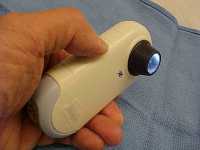

Jac Dinnes PhD, MSc, MA, PGDip
Senior Researcher
Test Evaluation Research Group
Institute of Applied Health Research
University of Birmingham
MedicalResearch.com: What is thebackground for this study? Would you briefly explain the benefits of dermoscopy?
Response: This systematic review was one of a series of Cochrane Reviews of studies evaluating different tests for diagnosing skin cancer. Within creasing rates of skin cancer and an increasing number of more specialised tests becoming available in both primary care and in specialist settings, a thorough review of all available evidence was timely.
The diagnosis of melanoma and other skin cancers fundamentally relies on clinical examination, including history taking, and visual inspection of the concerning skin lesion (mole or patch of skin) and surrounding skin (and other lesions). A dermatoscope is a handheld device using visible light (such as from incandescent or LED bulbs), that allows more detailed examination of the skin compared to examination by the naked eye alone.
Knowing the diagnostic accuracy of dermoscopy added to visual inspection alone, across a range of observers and settings, is critical to understanding its contribution for the diagnosis of melanoma and to future understanding of the potential role of the growing number of other high-resolution image analysis techniques.
(more…)Using of Big Data to Estimate Prevalence of Defective DNA Repair Variants in the US
MedicalResearch.com Interview with:


Kenneth H. Kraemer,M.D.
Chief DNA Repair Section
Laboratory of Cancer Biology and Genetics, Center for Cancer Research
National Cancer Institute
MedicalResearch.com: What is the background for this study?
Response: At the National Cancer Institute, we have been examining patients with xeroderma pigmentosum (XP), a rare, recessively inherited, cancer-prone disease for many years. Therefore, with the increasing use of exome sequencing, we decided to see how closely"big data" corresponded with our clinical observations.
(more…)
Machine Learning Program Superior to Humans in Non-Pigmented Skin Lesions
Risk Factors for Melanoma in Women
What Can Be Done About Sundamaged Skin?
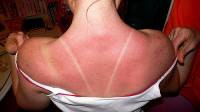



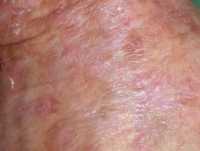

![MedicalResearch.com Interview with: Selin Tokez, PhD Student Department of Dermatology Erasmus MC, Rotterdam MedicalResearch.com: What is the background for this study? Response: Cutaneous squamous cell carcinoma (cSCC) is the second most common skin cancer worldwide with still increasing incidence rates. Given these high incidence rates together with the associated health costs and possibility of fatal progression, it is extremely important to have accurate and complete data on the epidemiology of this disease. Nevertheless, national cancer registries in many countries do not routinely record cSCC cases and therefore currently known numbers are mainly based on incomplete data sources. Additionally, if cSCC cases are registered, this usually only concerns the first cSCC per patient while we know that, contrary to many other malignant neoplasms, patients may develop numerous cSCCs over time. MedicalResearch.com: What are the main findings? Response: In the present study, we analyzed Dutch nationwide data comprising about 145,000 patients with a first invasive cSCC diagnosis between the years 1989 and 2017. We found that the incidence rates of a first cSCC per patient almost tripled in male patients and increased about fivefold in female patients in this 30-year time period. Also, we had data on all cSCCs per patient for the year 2017 and could therefore compare this with the data on only the first cSCC per patient: incidence rates increased by 58% for men and 35% for women when multiple cSCCs were considered. In absolute numbers, this resulted in an increase of 45% in cSCC diagnoses in 2017. Lastly, we extended our analyses by predicting future cSCC incidence rates up to 2027. Given that no substantially effective measures are undertaken in the near future, current cSCC incidence rates will increase with 23% in males and 29% in females in the next decade. MedicalResearch.com: What should readers take away from your report? Response: We could summarize our main message in two points: while people generally know that cSCC is a very common disease with increasing incidence rates, it is not taken into account that these numbers are often based on incomplete data registries and that the real numbers are even higher. In this paper, we provided these numbers for a period of 30 years based on highly accurate data from the Netherlands Cancer Registry. On top of that, as a second main finding, we showed that the real burden caused by cSCC is approximately 50% higher (taken males and females together) when all cSCC diagnoses in 1 year are registered instead of only the first tumor per patient. Together with our prediction analyses that showed an on average 26% further increase for the coming decade, this will have enormous implications for the dermato-oncological health care planning and cost management. Our results urgently call for revision of skin cancer health policies to be able to cope with this rising burden of cSCC management. Ultimately, primary prevention will remain the key strategy to halt the increasing trend in cSCC incidence and the occurrence of multiple cSCCs per patient, which we hope to further stimulate with our paper as well. MedicalResearch.com: What recommendations do you have for future research as a result of this work? Response: As we had data on multiple cSCCs for only one year, we would suggest to perform trend analyses for multiple cSCCs per patient as well when a longer follow-up duration has been reached. Furthermore, it would be very relevant to identify high-risk cSCCs or patients at risk for multiple cSCCs in order to be able to establish efficient follow-up regimens and take these high risk groups into account when revising skin cancer health policies. MedicalResearch.com: Is there anything else you would like to add? Response: The authors of this study have no conflicts of interest that are relevant to this article. Citation: Tokez S, Hollestein L, Louwman M, Nijsten T, Wakkee M. Incidence of Multiple vs First Cutaneous Squamous Cell Carcinoma on a Nationwide Scale and Estimation of Future Incidences of Cutaneous Squamous Cell Carcinoma. JAMA Dermatol. Published online October 28, 2020. doi:10.1001/jamadermatol.2020.3677 [subscribe] Last Modified: [last-modified] The information on MedicalResearch.com is provided for educational purposes only, and is in no way intended to diagnose, cure, or treat any medical or other condition. Always seek the advice of your physician or other qualified health and ask your doctor any questions you may have regarding a medical condition. In addition to all other limitations and disclaimers in this agreement, service provider and its third party providers disclaim any liability or loss in connection with the content provided on this website.](https://medicalresearch.com/wp-content/uploads/2020/10/squamous-cell-cancer-dermnetnz-image.jpg)


